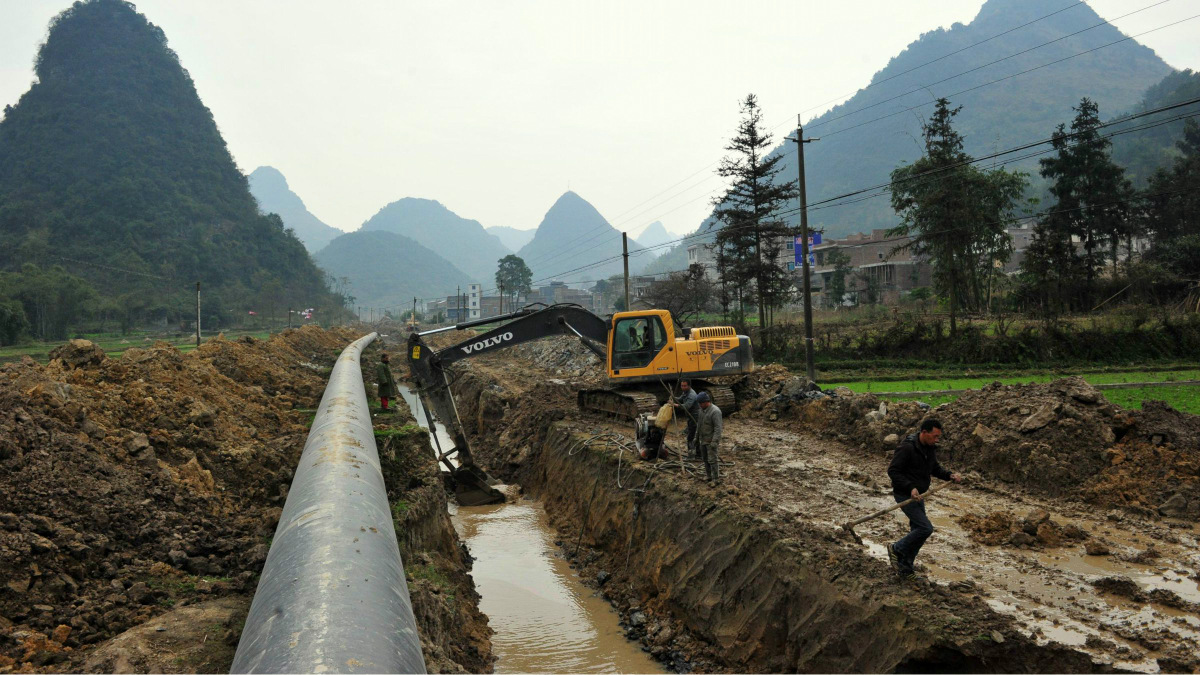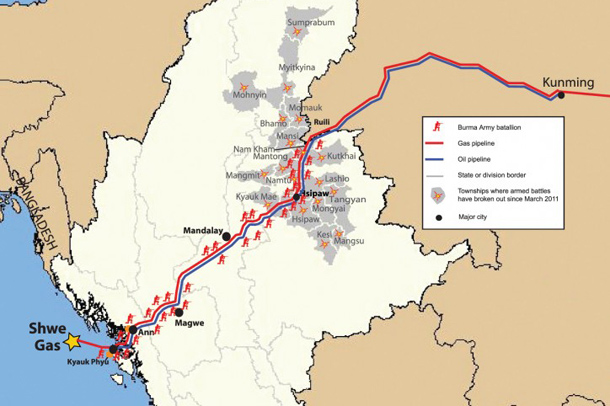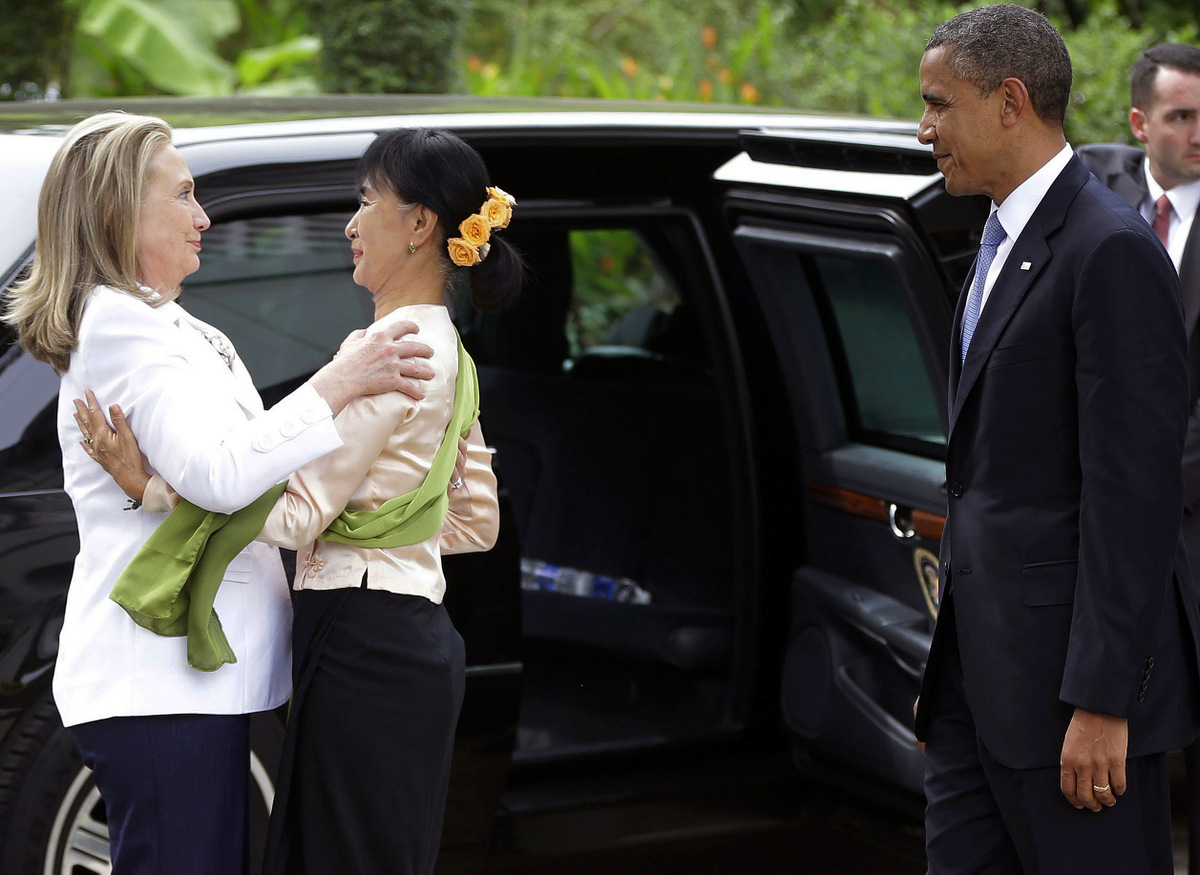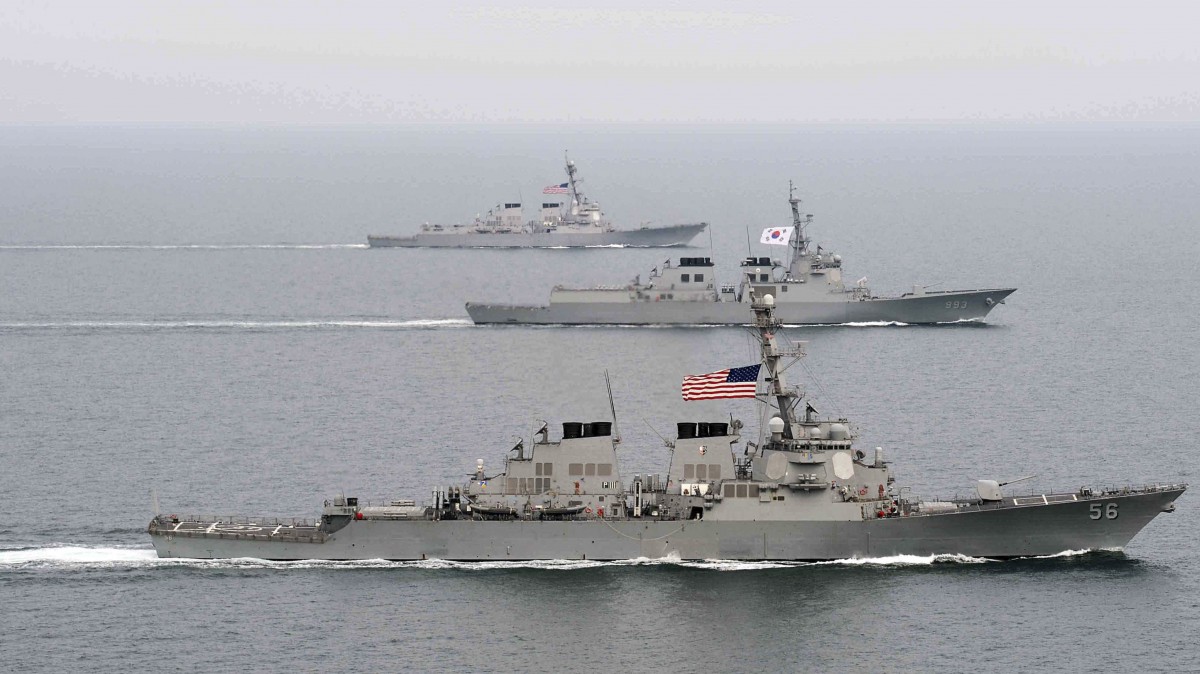YANGON, MYANMAR – (Analysis) In recent years, Myanmar (formerly Burma) has only rarely been in the news. The quiet treatment owed much to the assumption that the country’s fledgling democracy was in “good hands” once the U.S-backed 1991 Nobel Peace Prize winner Aung San Suu Kyi gained renewed political prominence after the 2015 elections and assumed the office of state counselor a year later. However, the tide of international public opinion has been turning sharply against Suu Kyi as human rights activists, the United Nations and several other Nobel laureates have strongly criticized her handling of what has now become known as the “Rohingya crisis.”
The crisis centers on the plight of the Rohingya, a historically persecuted Muslim minority living in Myanmar’s coastal Rakhine state (formerly Arakan state). The Rohingya are also stateless, as Myanmar’s government has long refused to recognize their centuries-long claim to the region and has asserted on several occasions that the Rohingya are not native to Myanmar but instead “illegal immigrants” from neighboring Bangladesh. Deprived of citizenship and thus of basic rights, their suffering has been compounded by Myanmar’s government, which has used the military to violently intimidate the Rohingya and force them from their lands.
This month, in particular, the corporate media — as well as several prominent human rights organizations and international bodies, such as the UN — have given unprecedented attention to the conflict. Last Monday, for example, Zeid Ra’ad al-Hussein, the United Nations high commissioner for human rights, accused Myanmar of undertaking “a textbook example of ethnic cleansing” and stated that Myanmar’s campaign against the Rohingya violated international law. In the first two weeks of September, corporate media outlets have reported extensively on the crisis. Just last week, CNN published 13 different articles about the Rohingya’s plight. Calls have mounted for Suu Kyi, as Myanmar’s leader, to intervene.
Given the recent flurry of press coverage and the spike in concern among international bodies such as the United Nations, one might assume that the ethnic cleansing of the Rohingya by Myanmar’s government is a recent phenomenon. However, in reality, the conflict itself is nearly a century old and its current escalation did not begin this year, but rather in 2011, and has continued to worsen ever since. Furthermore, numerous other instances of genocide, such as the Saudis’ destruction of Yemen and Israel’s ethnic cleansing of Palestine, are hardly touched by the corporate media or mentioned in mainstream political discourse.
So why the sudden interest in Myanmar?
Oil and Gas Pipelines


Construction on the China-Myanmar pipeline. (Imaginechina/AP)
Like so many other cases of ethnic cleansing, the Rohingya conflict is essentially a conflict over resources, namely oil and gas. In 2004, a massive natural gas field, named Shwe in honor of the long-time leader of Myanmar’s military junta, was discovered off the coast of Myanmar in the Bay of Bengal. In 2008, the China National Petroleum Corporation (CNPC) secured the rights to the natural gas and bestowed upon the field its honorific name. Construction began a year later on two 1,200 km overland pipelines that would cross from Myanmar’s Rakhine state – home of the Rohingya – to the Yunnan province of China.


Map showing the route of the China-Myanmar oil and gas pipelines.
(Image: Shwe Gas Movement)
The pipelines — one carrying gas and the other carrying oil from the Middle East and Africa, brought to Myanmar by ship — missed their targeted dates for completion. The gas pipeline became operational in 2014 and carries more than 12 billion cubic meters of natural gas per year to China. The oil pipeline has proven more difficult to construct and is set to be completed later this year. Once completed, it will allow China easier access to oil from the Middle East and Africa and will reduce the transport time of such oil by as much as 30 percent.
Beyond the obvious boon of having increased and easier access to oil, the Shwe oil pipeline is of critical strategic importance to Chinese geopolitical interests. Currently, 80 percent of China’s imported oil passes through the straits of Malacca and disputed parts of the South China Sea. This current route would leave China vulnerable to a potential energy blockade imposed by the 6th Fleet of the U.S. Navy, were hostilities to arise between the two rival nations. Once the Shwe oil pipeline became operational, the Chinese would no longer have to worry about the possibility of the U.S. imposing a blockade on the vast majority of Chinese oil imports, a critical advantage for China during a period of rapidly decaying Sino-U.S. relations.
Since construction began, protests against the pipelines in Rakhine state and other areas of Myanmar have been constant. Residents of Rakhine state, in particular, have complained to the government and to CNPC on numerous occasions that the project had polluted rivers, destroyed private property and decimated the livelihood of local fishermen. In addition, many of the owners of properties expropriated for the project were not compensated by CNPC as promised, further stoking anti-pipeline demonstrations and unrest. Protesters have also repeatedly called for CNPC to supply the surrounding area with electricity, a basic utility still lacking there, and to offer more job opportunities for local workers.
The Myanmar government is a major stakeholder in the pipeline, as it owns a major stake in the Shwe field’s production of natural gas and is set to earn $7 million per year in annual right-of-way fees for the pipelines once both are completed. Given that public opposition forced Myanmar to suspend China’s Myitsone Dam project in Kachin state in 2011, the government is acutely aware that unchecked local resistance to the pipelines could potentially deprive it of millions of dollars in annual revenue. Thus, Myanmar’s military has been ardently pursuing the Rohingya, citing vengeance for periodic attacks launched by regional insurgents as a pretext for the violence that has forced hundreds of thousands from their homes.
A manufactured insurgency financed by Saudi Arabia


Ataullah abu Ammar Junjuni, a Pakistani national with deep ties to Saudi Arabia, center, and leader of the Arakan Rohingya Salvation Army. (Photo: screenshot)
The “Rohingya insurgency” in Rakhine state is hardly the organic, local response to long-standing state suppression it claims to be. The group, now known as the Arakan Rohingya Salvation Army (ARSA) and formerly known as Harakah al-Yakin, is led by Ataullah abu Ammar Junjuni, a Pakistani national who worked as a Wahhabi imam in Saudi Arabia prior to arriving in Myanmar. According to a Reuters report from last year, the group is financed by both Pakistan and Saudi Arabia — and “a committee of 20 senior Rohingya emigres,” headquartered in Mecca, “oversees” the group.
ARSA is directly responsible for both last year’s and the current crackdown on Rohingya civilians and communities, as its attacks on Myanmar military installations and bases have precipitated the military’s violent response. ARSA has also targeted Buddhist civilians in Rakhine state, fomenting support among extremist Buddhists elsewhere in the country for the continued persecution of the Rohingya.
ARSA is also likely to have no shortage of recruits, as Saudi Arabia is spending over a billion dollars to construct 560 Wahhabi mosques in nearby Bangladesh, the nation where most Rohingya have fled to escape the violence.
Related | British Ambassador: Saudi Arabia Breeds ‘Fodder For Terrorism’
Despite this, international corporate media outlets such as CNN and Al Jazeera have published sympathetic portrayals of the Wahhabist insurgency, asserting that the group “is not a terrorist group aimed at striking at the heart of Myanmar society as the government claims it is” but rather “a group of hopeless men” working to protect their people. However, Myanmar’s Muslim organizations have overwhelmingly condemned ARSA for its tactics and extremist views. The parallels to the corporate media coverage of Saudi-funded Syrian “rebels” are obvious.
What does Saudi Arabia stand to gain from funding and driving the Rohingya conflict? A large crisis in Rakhine state, particularly one that has gained the attention of the UN, has the potential to derail the completion of the Shwe oil pipeline to China, which is set to begin functioning later this year. Preventing this pipeline from being built might directly benefit Saudi Arabia to some extent, but would be far more profoundly beneficial to a major ally of the Saudis, the United States. Another U.S./Saudi ally, Israel, also stands to profit as a significant supplier of weapons to the Myanmar regime, a role that has continued unimpeded despite the conflict.
U.S.’ noncommittal response a product of its long-game cynicism


U.S. President Barack Obama, right, watches as Myanmar democracy activist Aung San Suu Kyi, center, greets U.S. Secretary of State Hilary Rodham Clinton at her residence in Yangon, Myanmar, Monday, Nov. 19, 2012. Obama is the first sitting U.S. president to visit the Asian nation. (AP/Pablo Martinez Monsivais)
While China’s tacit support of Myanmar’s response to the Rohingya crisis was expected given its clear economic and strategic interests in the nation, some reports expressed surprise that the U.S. — the reputed, if selective, global “defender” of human rights — was “wary of involvement” in the conflict despite the outrage expressed by the UN and the corporate media. According to the Associated Press, the U.S. is concerned its involvement could “undermine the Asian country’s democratic leader,” Aung San Suu Kyi, whose rule is largely a product of Western funding.
U.S. interest in Myanmar is hardly new, as the U.S. government, along with various U.S. nongovernmental organizations, have spent millions on “democracy promotion” — specifically on funding the National League for Democracy (NLD) led by Suu Kyi. In 2003, a document titled “Burma: Time for Change” by the Council on Foreign Relations (CFR) noted that the NLD, and its leader, “cannot survive in Burma [Myanmar] without the help of the United States and the international community.”
Related | Mad Monks: The Greatest Threat To Myanmar’s Fledgling Democracy
In the years since, the U.S. government has spent hundreds of millions of dollars in order to cultivate “democratic institutions” and spur “economic development” in order to push for a new form of government in Myanmar. Between 2012 and 2014, the Obama administration gave $375 million to Myanmar for such efforts.
Furthermore, in 2015, the U.S. Agency for International Development (USAID) was the “leading donor” in Myanmar’s 2015 election, which saw Suu Kyi and her party claim decisive victories. It also funded the creation of Myanmar’s entire voter database that year and the use of all technology used in the election and subsequent elections. Ultimately, over $18 million was spent on the election by USAID.
In addition, several nongovernmental organizations, often funded by controversial U.S.-Hungarian billionaire George Soros, have been involved in Myanmar “democracy promotion.” Two such examples are the London-based Prospect Burma and the CFR umbrella group known as the Burma Task Force, which has taken up the Rohingya’s plight as its flagship issue since 2013. Soros’ Open Society Foundations have also been involved in Myanmar for some time, specifically in attempting to pressure Indian shareholders of the Shwe natural gas pipeline into abandoning the project.
Suu Kyi’s election marked a reversal for Myanmar in several ways, particularly economically. While Suu Kyi’s predecessors had favored investment from China and South Korea, Suu Kyi’s rise to power has seen increased U.S. investment in Myanmar, partly because the U.S. waited to remove sanctions against the country until she became the nation’s leader. Soon after her election, U.S. investment increased precipitously and is expected to double its current level by 2020. As of last month, U.S. companies had invested $250 million in Myanmar following Suu Kyi’s assumption of power.
However, this new surge in investment is not as new for U.S. oil and gas companies, who have been allowed to invest in Myanmar, despite U.S. sanctions, since 2012. The Obama administration made the exception due to the fear that the U.S. “would lose out to foreign competitors” before sanctions were fully lifted, a clear allusion to the Chinese and South Korean companies which had claimed large swaths of the Shwe gas field a year prior. However, Suu Kyi’s rise to prominence led to more lucrative contracts for U.S. and Western companies, particularly Shell Oil and ConocoPhillips.
“Puppets” with ideas of their own


Myanmar’s State Counsellor Aung San Suu Kyi, left, talks with Chinese President Xi Jinping and his wife Peng Liyuan during a welcome ceremony for leaders attending the Belt and Road Forum, at the Great Hall of the People in Beijing, Sunday, May 14, 2017. (Wang Zhao/Pool Photo via AP)
While the uptick in U.S. corporate investment and U.S. ties is unsurprising given the U.S.’ own massive investment in Suu Kyi and her political party, the U.S. is less than pleased with Suu Kyi’s tenure thus far. As The New York Times recently noted, Suu Kyi has maintained and even strengthened her nation’s ties with China, failing to favor the U.S. interests responsible for her rise to power.
For instance, Suu Kyi has visited Beijing twice since becoming Myanmar’s leader yet has rejected an invitation to a conference organized by U.S. Secretary of State Rex Tillerson. She has expressed her feelings that China “will do everything possible to promote our peace process,” referring to China’s eagerness to end sectarian fighting in Rakhine State and other area of Burma. There are also suggestions that the Chinese are seeking to develop a naval base in the port city of Kyaukpyu, something the U.S. desperately wants to avoid.
Min Zin, executive director of the Institute for Strategy and Policy in Myanmar, told the Times that “As the United States recedes, Aung San Suu Kyi is relying more and more on China in Myanmar and on the international stage.”
Related | The Myanmar Conflict – Explained
Suu Kyi’s decision to keep China close is similar to the stance taken by Filipino President Rodrigo Duterte, who has fought to diminish the U.S.’ historically strong influence in his country and forge closer ties to both China and Russia. Interestingly, following the strengthening of ties between these two nations and China, Myanmar and the Philippines became the only Southeast Asian nations forced to battle against Saudi-funded Wahhabist insurgencies — ARSA in Myanmar and Daesh (ISIS) in the Philippines. Duterte has implicitly blamed the U.S. for the rise of Daesh in his country.
The rise of both Wahhabist groups has offered a convenient excuse for the U.S. to boost its military presence in both nations. In Myanmar, the U.S. State Department in late June removed Myanmar from its list of nations using child soldiers, despite having no valid reason for doing so, as Myanmar continues that odious practice. The move — which conveniently ended the U.S.’ prohibition on providing U.S. military aid, training and U.S.-made weapons to Myanmar — was carried out over the objections of experts in the State Department’s Bureau of Democracy, Human Rights, and Labor, which typically shapes U.S. policy on the issue.
The U.S. is set to further expand its direct military ties with the nation by way of an amendment hidden within the 2017 National Defense Authorization Act (NDAA). If passed, the NDAA would allow for the full normalization of ties between the militaries of the U.S. and Myanmar, and would enable the U.S. to provide the same level of technical and logistical assistance as well as training it currently provides in the Philippines. It would also open the path for the U.S. to establish a military base, which would definitively end Chinese hopes for its own naval base in Myanmar. Meanwhile, Israel, a strong ally of the United States, has continuously been selling arms to Myanmar’s military.
Playing both sides: a high-stakes geopolitical protection racket


South Korea and U.S. warships participate in their joint military drill Foal Eagle in South Korea’s West sea. (AP/South Korea Navy via Yonhap)
In the context of the Rohingya crisis, the U.S. is playing both sides of the conflict. On one hand, its close ally Saudi Arabia is funding and fomenting the insurgency responsible for the worst recent escalation of the crisis, while the U.S. corporate media paints this insurgency as “freedom fighters” and focuses public attention on the issue at a critical time. On the other hand, the U.S. is offering Myanmar deeper military cooperation to help combat the very insurgency problem it is helping to create, while also offering increased U.S. corporate investment in Myanmar’s economy.
With calls for Suu Kyi to take drastic action to address the issue growing by the day, the U.S. has the ability to force her hand, both covertly and overtly. If the crisis continues to worsen, the possibility that Suu Kyi will request U.S. military assistance to combat an outbreak of “terrorism” will grow. Such an outcome would greatly benefit the U.S., which would gain a new military foothold in another Chinese border nation and also secure Myanmar’s oil and gas riches for itself.
U.S. strategic interest in Myanmar is hardly limited to dominating the exploitation of the nation’s lucrative oil and gas resources. A large part of the U.S. motivation to wrest influence from the Chinese is crucial to its larger regional “China containment” strategy — one that seeks to create a united front of U.S. influence surrounding China in order to reassert U.S. dominance in the region.
This goal was notably expressed by former Secretary of State Hillary Clinton who, in a private speech in 2013, stated “we’re going to ring China with missile defense. We’re going to put more of our fleet in the area.” This policy has been put into practice with Obama’s 2011 “pivot to Asia” — resulting in a massive increase in U.S. arms sales to countries neighboring China, as well as the proliferation of Saudi-backed insurgents in nations that seek to foster closer ties with Beijing, namely the Philippines and Myanmar.
Watch journalist John Pilger’s documentary, “The Coming War on China,” for a thorough examination of the U.S.’ China “containment” policy:
With so much to be gained in geopolitical goal-realization from a favorable veer in the current “crisis,” the U.S. is also acutely aware of what it stands to lose if the chips fall the other way. An opening of the Shwe oil pipeline to China would remove permanently the U.S.’ capacity to impose a blockade on 80 percent of China’s oil supply. Losing this massive strategic advantage would be disastrous for the U.S. were a major geopolitical conflict between the two rival powers to develop. With the U.S. threatening to remove China from the SWIFT banking system, tensions on the Korean peninsula flaring, and China touting a oil/gold/yuan alternative to the petrodollar, such a conflict is far from a remote possibility.
Thus, the U.S. interest in Myanmar is multi-faceted — a sinister union of the U.S.’ ever-growing demand for fossil fuels and its ruthless push to reassert political dominance in Asia at China’s expense. As with other recent U.S.-led efforts to control globally strategic hydrocarbon flows, the cloak is a Saudi-funded insurgency that has sparked and continues to foment a brutal crackdown against a disadvantaged minority group. The goal is simple: to force Myanmar to choose between either the United States or China as a “strategic partner.”
Ultimately, the Rohingya are the latest pawns of the United States’ desperate attempts to cling to global dominance under the guise of “humanitarianism.” If U.S. interests are successful and oust the Chinese, the Rohingya will continue to suffer all the same. The only difference will be that their tormentors will answer to different masters.
Top photo | A woman wears a mask of Myanmar’s Foreign Minister Aung San Suu Kyi during a rally against the persecution of Rohingya Muslims, outside the Embassy of Myanmar in Jakarta, Indonesia, Nov. 25, 2016. (AP/Dita Alangkara)
<!–
–>
Source Article from http://www.mintpressnews.com/oil-gas-geopolitics-us-rohingya-crisis/232145/
 RSS Feed
RSS Feed















 September 19th, 2017
September 19th, 2017  Awake Goy
Awake Goy 
 Posted in
Posted in  Tags:
Tags: 














To day the Nobel prizes to Aung Sui ki has been stripped today by Nobel committee today. In UN China and Russia have blocked the Agenda against Burma in Un general Assembly.CIA official offers diplomatic solution of North Korea crisis for diplomatic solution. Hope that things are moving in right direction.